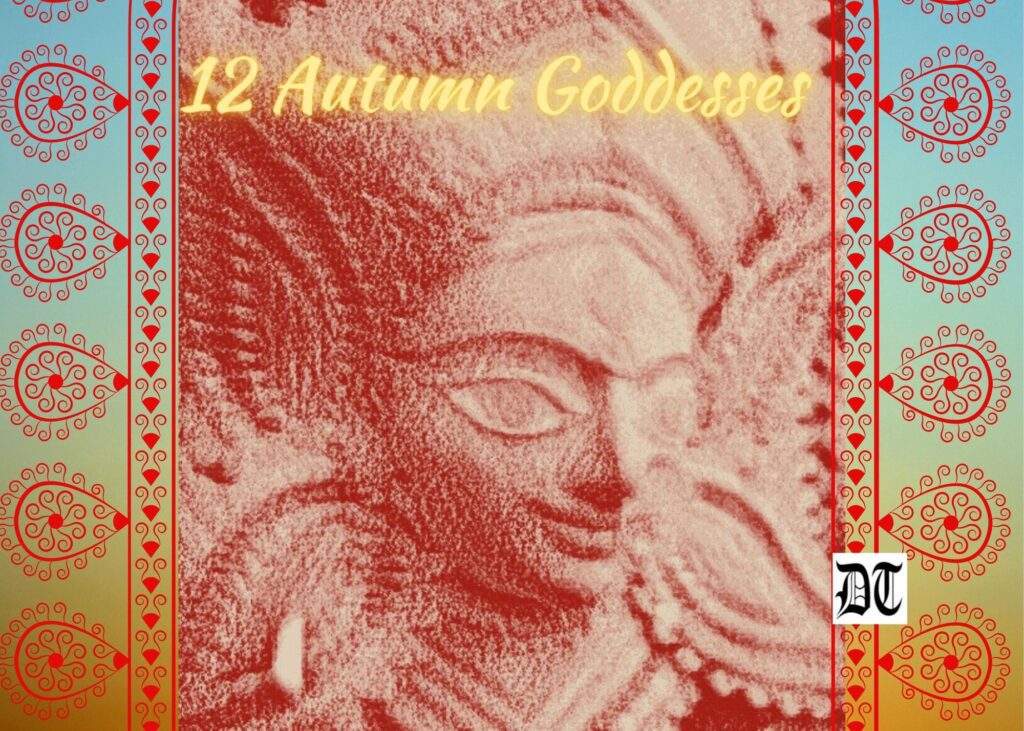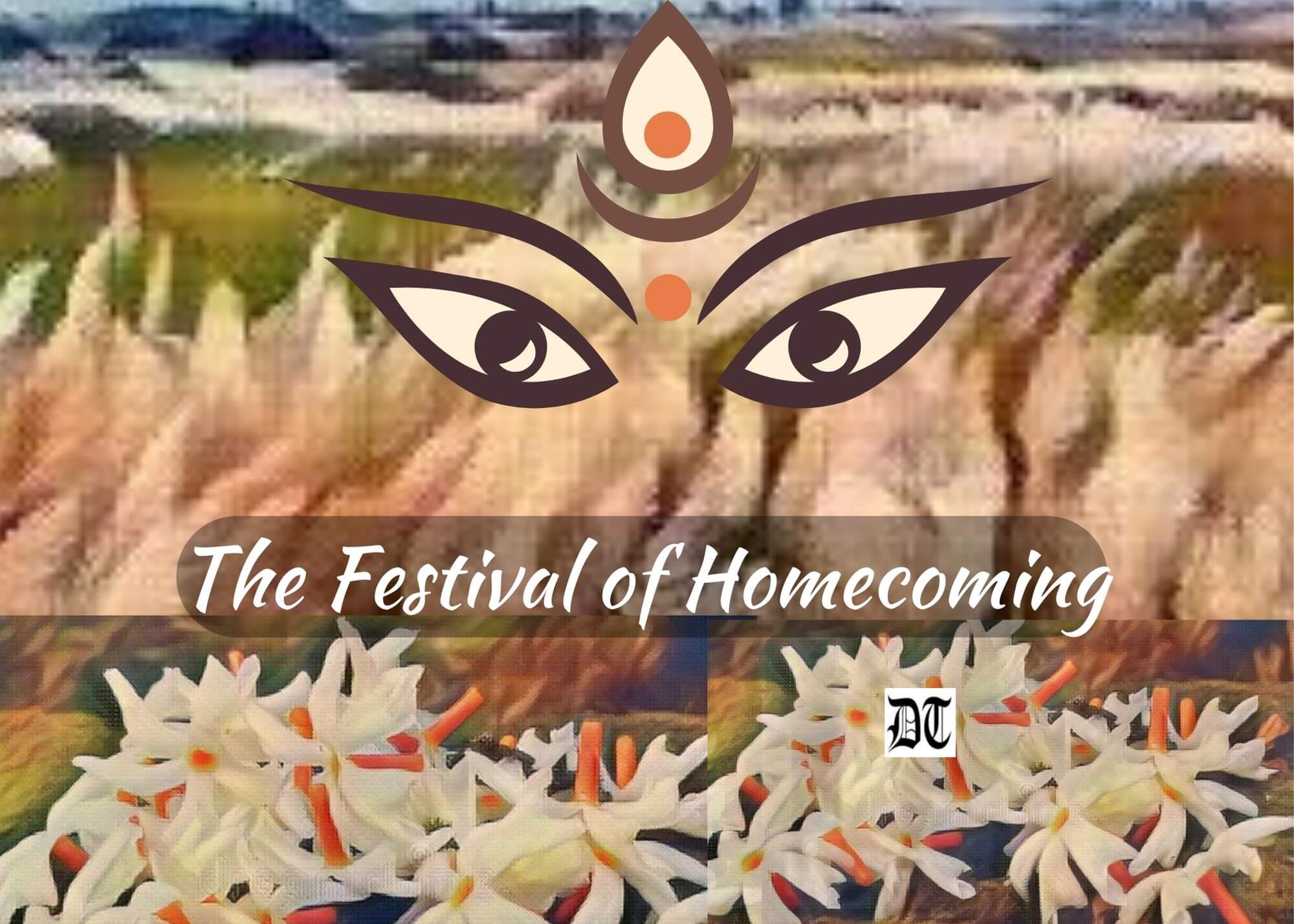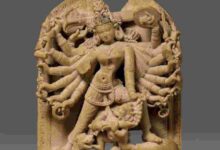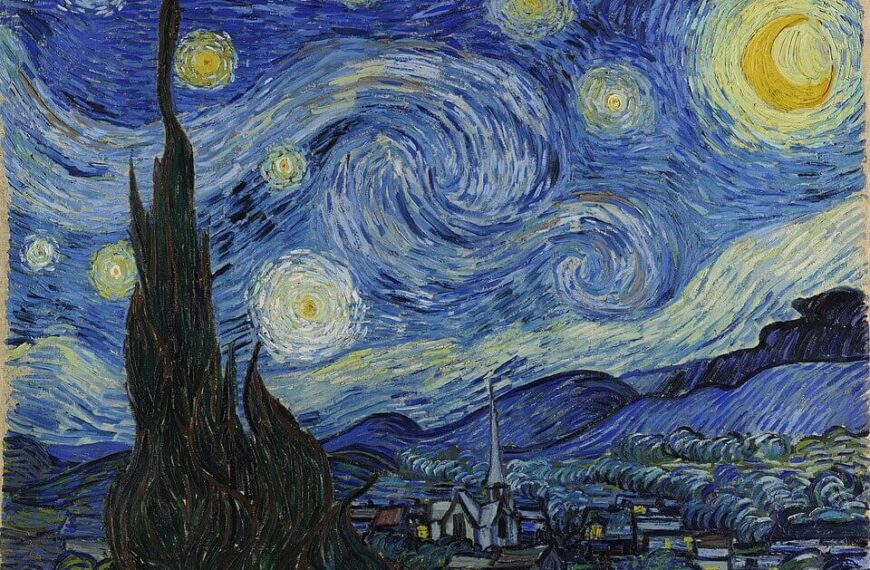In the Goddess Durga’s homecoming, Mitali reminisces the fragrance of three seasonal flowers that reminds her of home. She reflects on the homelessness of refugees – no homecoming for them – in an exclusive Special Feature for Different Truths.

As I listen to the strains of the songs from Agomoni[1], my heart travels to a time when the fragrance of shiuli, togor and malatilata — all flowers indigenous to Bengal — filled the season with the excitement of the Durga Puja. I look out of the window — the landscape is not like the one of my childhood. Here I can see yellow blooms of Angsana, golden orioles and a sea inlet that has been converted to a rainwater reserve and goes by the name of a river. Nature is beautiful here, too — birds, otters, turtles, fishes, frogs and monitor lizards are all residents near the river where I stay. But there is no shiuli or togor.
I do not have any regrets for what I have left behind, but I cannot deny missing that whiff of flowers and the pujas as I knew them almost three decades ago.
Travelling around the world, I have in the past sometimes missed participating in pujas altogether.
Travelling around the world, I have in the past sometimes missed participating in pujas altogether. Though the festival evolved about two hundred years ago in Bengal, it is largely celebrated as a community-based event. Living overseas, there have been times when no one who celebrated Durga Puja lived in the town we were stationed. We celebrated it in our way and spoke of it with friends from other cultures, trying to create the sense of joy we had for our children. The experience of not having anyone from one’s own culture can lead to creative ways of celebrating traditional festivals and a sense of liberation, which can be a bit lonely too. Did I regret that? I am not sure. I was too busy to be unhappy, and there were too many exciting experiences to savour.
Now, as I move forward, sometimes memories from more distant times waft into my mind. I get an imaginary fragrance from when my grandmother was alive, and I would go with her for the pujas. It was a family event. We had fun visiting various pujas, looking at the icons of the deities in various pandals, and trying different snacks — especially the traditional chops, cutlets and Mughlai parathas linked intrinsically with the flavours of Puja. The festivals being mostly community-based events were hosted separately by each colony for five days in special pavilions created for the festival. We looked forward to hopping through a series of such marquees decorated in different ways all over town.
My grandmother smelt of talcum powder and zarda. I miss her still …
My grandmother smelt of talcum powder and zarda[2]. I miss her still though she died more than eighteen years ago. She had paan reddened lips for as long as I can remember. She was the glue that held our large extended family together. We lived in a joint family. That was fun. As children, we never really cared who looked after our needs as someone or the other cared for them. Cousins made up for my lack of siblings. When I see dwindling families now, I feel sad for the love and warmth children miss out on from uncles, aunts, cousins and grandparents. But would it be the same for them? People have changed. Houses are smaller and can accommodate fewer people… is it our homes bigger or our hearts? We did not have rooms for each person — I never felt bad about that or missed having a room.
The best time for all the family to get together was weddings or the Durga Puja in those days. Durga Puja was the time for homecoming. Durga returned to her father’s home on Earth with her five children. Homecoming, whether of Durga, Rama or my family, was perceived as a joyous occasion. But homecoming is a theme that has become a privilege for only a few now.
For, can refugees have a home to get back to?
For, can refugees have a home to get back to? There are refugees who have left Bengal Sunderbans[3] for other parts of India as their homes have been claimed by water. There will be more climate refugees, say, climate experts[4], over the next few decades in parts of Bengal. There are those who have been forced to leave homes for impending wars, like in Ukraine[5]. Will they ever find a new home while we celebrate this grand festival of homecoming?
Our world is changing, as we can see. What was considered the norm in society is being redefined. While men and women rise against old, obsolete systems, as in Iran[6], should we be relooking at the concept of homecoming or homeland? Is homeland a pertinent concept, or should it be a mobile one, as voiced by Anthony Sattin in his book, Nomads: The Wanderers Who Shaped our World, where he puts the concept of bonding or asabiyya[7] over a settled home?
Perhaps, we need to rethink what home means to us. Is it a geographic location, a spiritual one or something else?
Perhaps, we need to rethink what home means to us. Is it a geographic location, a spiritual one or something else? A snail carries its home on its back, and nomads have homes in tents or now, global ones redefine home by moving with laptops and suitcases anywhere in the world. What was home for us during childhood does not continue as a home for our progeny. Durga relocates to heaven after her wedding and returns to it of her own will. She has relocated fully to her husband’s home – so what is a homeland for her?
As we accept the changes and move from caves towards outer space, one of the things we do need to consider is, do our believed homelands weave us together as a single species with concern for the wellbeing of our single home, the Earth, or do they separate us into hostile competitive entities bent on exploiting and destroying the planet with manmade constructs?
The world has come a long way. When we return, we no longer find the universe we left behind — but something unfamiliar that lacks the lustre of yesteryears. The magic of childhood has changed places now. Angsanas and orchids have replaced the scent of shiuli and togor for me. I can confidently say things have only improved since childhood, even if the flavours are changed. Do I want to go back?
I am not sure. I love life as it is and see the sunrise outside my window. And feel blessed.
[1] Songs to welcome the Goddess Durga that is traditionally played at the onset of the season, when the Goddess is said to begin her descent from Heaven towards Earth.
[2] Scented tobacco that is eaten with betel leaf or paan
[3] https://www.dw.com/en/forgotten-people-sundarbans-climate-refugees-forced-to-move-again/a-61162969
[4] https://www.policyforum.net/the-climate-crisis-is-already-devastating-communities/ & https://borderlessjournal.com/2022/01/14/potable-water-crisis-the-sunderbans/
[5] https://borderlessjournal.com/2022/04/14/a-voice-from-kharkiv-refugee-in-her-own-country/
[6] https://www.euronews.com/culture/2022/09/21/explained-why-is-the-hijab-significant-in-iranian-society
[7] https://en.wikipedia.org/wiki/Asabiyyah
Picture design by Anumita Roy, Different Truths





 By
By
 By
By

 By
By